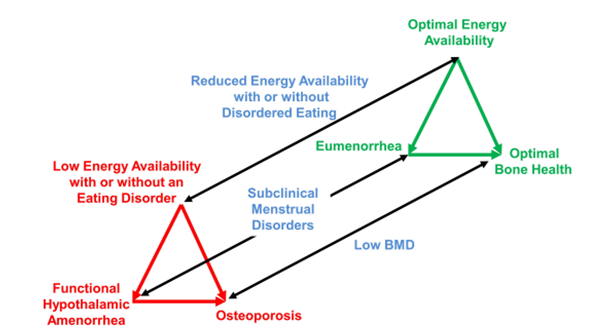Female athletes need to manage menstruation along with everything else an athlete may need to deal with. Menstruation affects the female haemoglobin and iron levels, resulting in decreased oxygen carrying capacity, intensity levels, and motivation. It also causes varying degrees of pain and discomfort for the female athlete.
Female athletes are also under greater pressure to have an “athletic” figure. Our society places great value on external beauty, especially in relation to women and a female athlete who is in the media is expected to be beautiful. This can lead the athlete to develop eating disorders, which then affects not just their iron and haemoglobin levels, but their calcium and magnesium levels leading to poor bone density.
Figure 1: Female Athlete Triad
The relationship between energy availability (eating disorders), menstruation (iron deficiency), and bone density is known as the female-triad, often pictured using the figure above. This triad will be further explored as female athletes are studied throughout this dot point.
In addition, you are required to understand how pregnancy affects sports participation for female athletes.
Students learn about:
- Female Athletes
Students learn to:
- assess the degree to which iron deficiency and bone density affect participation in sport
Past HSC PDHPE Exam Questions (2012-2022)
2015 Question 31
(a) Why do iron deficiency and lower bone density affect female athletes? 8 Marks

